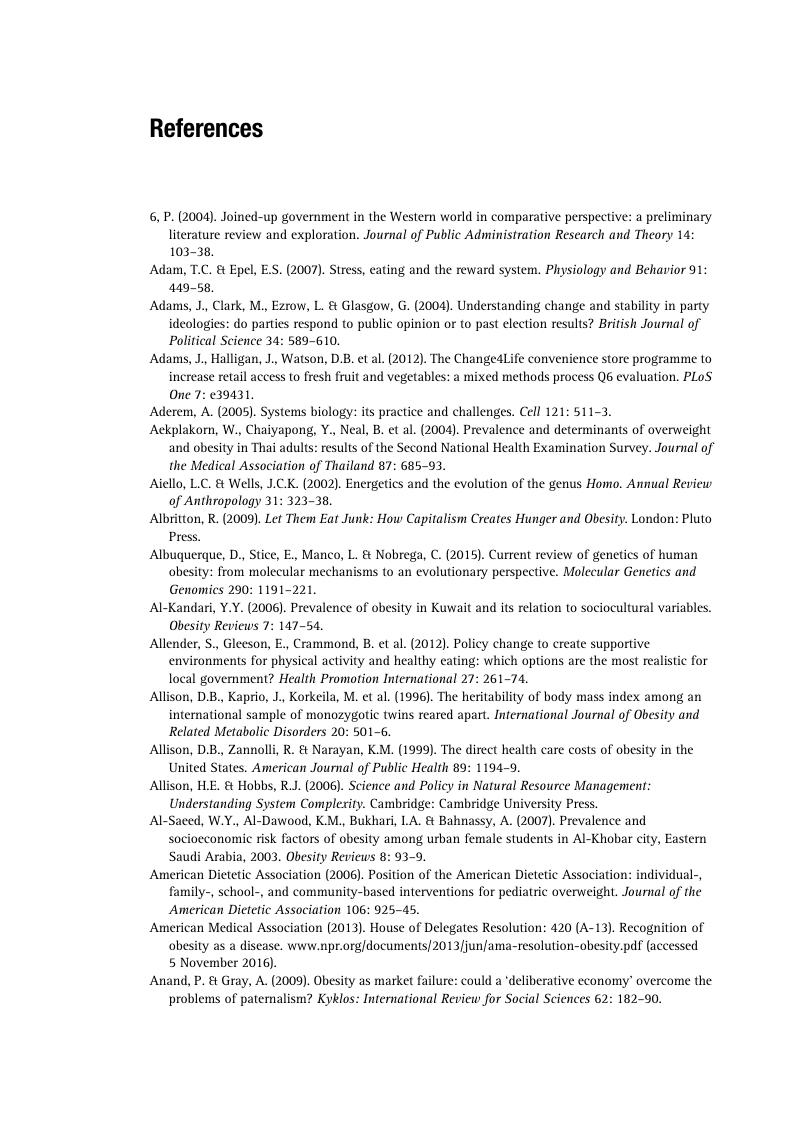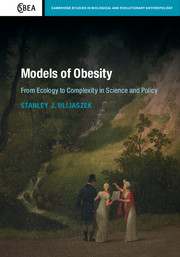Book contents
- Models of Obesity
- Cambridge Studies in Biological and Evolutionary Anthropology
- Models of Obesity
- Copyright page
- Contents
- Acknowledgements and Influences
- 1 Introduction
- 2 Rationalities and Models of Obesity
- 3 Energy Balance, Genetics and Obesogenic Environments
- 4 Governance through Measurement
- 5 Inequalities
- 6 Food and Eating
- 7 Global Transformations of Diet
- 8 Obesity Science and Policy
- 9 Complexity
- 10 Systems and Rationalities
- References
- Index
- References
References
Published online by Cambridge University Press: 06 October 2017
- Models of Obesity
- Cambridge Studies in Biological and Evolutionary Anthropology
- Models of Obesity
- Copyright page
- Contents
- Acknowledgements and Influences
- 1 Introduction
- 2 Rationalities and Models of Obesity
- 3 Energy Balance, Genetics and Obesogenic Environments
- 4 Governance through Measurement
- 5 Inequalities
- 6 Food and Eating
- 7 Global Transformations of Diet
- 8 Obesity Science and Policy
- 9 Complexity
- 10 Systems and Rationalities
- References
- Index
- References
Summary

- Type
- Chapter
- Information
- Models of ObesityFrom Ecology to Complexity in Science and Policy, pp. 183 - 225Publisher: Cambridge University PressPrint publication year: 2017



